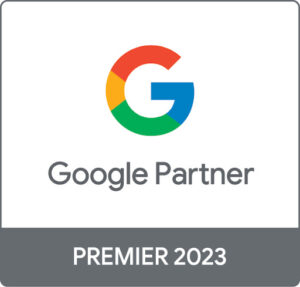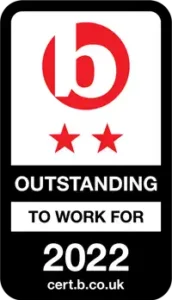At Seed, we are always hungry to expand our digital marketing knowledge so that we can grow as an agency and stay up to date with the upcoming trends. Last week, some of the team attended Marketing Week Live to hear from industry leading experts discussing the latest insights and developments in everything from content to PPC to SEO.
We have done a quick fire round up of some of the things we took away from the event and why we enjoyed the day.
Tom Q (Technical SEO)
As a new Digital Marketer, I was excited to attend my first ever marketing event. To be able to engage with & learn from eager and knowledgeable people in the digital sphere was something I knew I would relish!
My first MWLive event on the whole was a very rewarding one in terms of my own personal development. Being new to the sector in a professional capacity; learning about some of the pertinent debates (historical, present and future) was quite insightful. Some of the speakers before delving deeper into their chosen topic gave a brief analytical timeline of how certain technologies, ideologies and methodologies have evolved over time and spoke about their respective trajectories moving forward. What this insight taught me is how we, as digital marketers can hypothesise with a greater degree of certainty where trends are going. As a result of this, we can then be more proactive as opposed to reactive in terms of our strategies in order to be ahead of the curve and innovate.
The talk was the most interesting for me personally focused on CRO. It showed me how CRO is incredibly nuanced in terms of its construction and it encompasses a wide array of areas. The speaker illustrated to us what areas are most important in CRO and placed particular emphasis on the different methods of testing and the audience journey. What I gleaned from his presentation was that testing should be done constantly and consistently in order to optimize, whether that be by Bayesian testing or simple A/B testing. With each test, one can build on each iteration of the given test subject, and with each release, conversion will naturally increase Converting at a higher rate. This is what is at the heart of CRO. The speaker finished with the great quote: “Don’t focus on increasing the number of times you roll the dice, but focus on increasing the odds of winning!”
Annie (Account Manager)
MWLive was a great opportunity to listen to a whole host of interesting talks. From social media to AI and video marketing there were so many avenues you could learn and discover. One talk I attended, ‘Why your social media strategy still isn’t working’, really stood out and I have come away from the day inspired to rejuvenate and reinspire the social strategies I work on. A key question that was proposed to the audience, that has left me thinking, was this: Why do people join social platforms in the first place?
This pretty simple and basic question really is so important when building a social media strategy. Understanding why your audience has joined a social platform will allow you to successfully align your strategy and powerfully target your core customers. For example, Instagram is a photo-sharing app. People from all over the world join this platform to share and explore beautiful photographs, looking to give and receive the maximum amount of likes. Therefore, forming a strategy that includes heavy copy isn’t going to work. You need to step back, answer the question, and use the most vibrant imagery you can to grab attention and bring awareness to your business. It may seem very simple, but sometimes wanting to push the maximum amount of information out there means you can lose sight of that primary question. Stepping back and answering ‘Why do people join social media platforms in the first place?’ will give your business the best chance of standing out from the crowd and coming out on top of your competitors!
Maisie (Account Manager)
MWLive was not only a great opportunity to network and grab a whole load of free pens, it was a good opportunity to discover and learn about new trends that are approaching the digital marketing industry before they become commonplace. One talk that stood out for me and that I found really interesting was ‘The next evolution in surveys: AI, chatbots and the power of conversation’ led by Marketing Manager Martin Powton, from Wizu.
Wizu, is a UK based company who specialise in the development of innovative solutions in the customer experience sector. The latest product to come out of Wizu was AI chatbots – something that is a huge talking point in the industry, something that is set to only get bigger!
As a regular online shopper I am always searching for an easier and faster way to gain further information about a product or a online discount code. Due to this, in time I have started to favour websites who support chatbots, giving me a more seamless shopping experience. But is this the same for everyone?
We were asked to think back to how we used the internet 5 years ago. How did we communicate with companies if we had a problem? What was the response time from the companies? If we had a problem, did we bother, or did we go to a different website?
In the last 5 years, Artificial Intelligence (AI) has changed the way we use the internet, and is going to do so even more in the next 5 years. In a recent survey by Business Insider, it was stated that “by 2020, 80% of companies will be automated chatbots to further increase engagement and provide a ‘24/7’ customer service”.
Chatbots offer a personalised, automated service that provide a ‘24/7’ service that many customers now expect. In an industry so competitive, it is important to stay ahead of the curve with the latest industry trends and updates. Think like the future shopper – are you on board with the upcoming AI & chatbot trend?
Olivia (PPC Executive)
Accompanying MWLive, the Insight Show showcased the latest trends and findings in data analysis, insight and market research.
Mike Follett, Managing Director of Lumen Research, spoke of their eye-tracking methodology for studying people’s attention in response to advertising media. Using findings from an array of studies utilising different channels, assets and brands, he extracted some key conclusions with regards to how attention really works.
“Nobody cares about your ads!”, he joked and went on to reiterate that people who could constitute as an ‘impression’ in digital terms, did not visit whatever platform, channel or medium your ad appears on to see your product. A magazine reader’s primary motive is to read the magazine’s material, as is a website visitor, and so on. Eye-tracking methodologies demonstrate that the mere presence of an ad within a viewable window of a user does not guarantee it is in their attentional focus.
We can deduce that of the x number of ad impressions served, a lesser number of these ads are actually being looked at. And indeed, the length of attention here is short; 1-2 seconds, Mike Follett estimates. He further hypothesizes that only 3% of people who have looked at an advert will view this for more than a second. We therefore should view display forms of advertisement, whether these be traditional or digital mediums, as capturing a percentage of those it reaches. Those which capture attention for longer will result in improved prompted recall down the line, as well as correlating to enhanced ROI.
How can we use these findings to influence our own creative strategies? Keep visuals as simple as they need to be, using negative space to draw viewers attention to the key message or call-to-action. When taking into consideration that ads are never seen in isolation, but enveloped in placement text and images, we can begin to understand that ‘less is more’ when conveying a message. Keeping to concepts of visual hierarchy can further help quickly guide attention to important features within the critical 1-2 seconds of initial attention, to maximise the success of recall.
Jon (PPC Executive)
For me, Marketing Week Live was a refreshing motivational booster. I entered keen to learn something new within the tech and marketing industry, I left wanting to apply my new found knowledge into practice immediately. Speaking to like-minded and career driven individuals, reminded me why I sacrifice time outside of work hours to constantly learn and develop my PPC skills. Walking around and seeing the passion within marketing very much made me feel at home and I have no doubt I will be returning next year.
Thomas Barta, author of ‘The 12 Powers of a Marketing Leader’ and Marketing Week columnist, produced an excellent talk on how to stand out in an incredibly noisy industry. He urged us not to restrict to our job titles and to ‘be brave enough to challenge the agenda’, to ‘bring out new ideas’, and to ‘come up with new ways of working’. Of course there are many specialists involved in PPC advertising that can produce similar text or shopping ads with respectable results, but the real challenge is to think outside of the box and create new ways within your field to excel all expectations. Thomas Barta’s words certainly spoke to me, and I walked away feeling a rush of motivation to shine above all marketers and make Seed the agency that collectively thinks outside the box, and produce innovation within the advertising industry.








